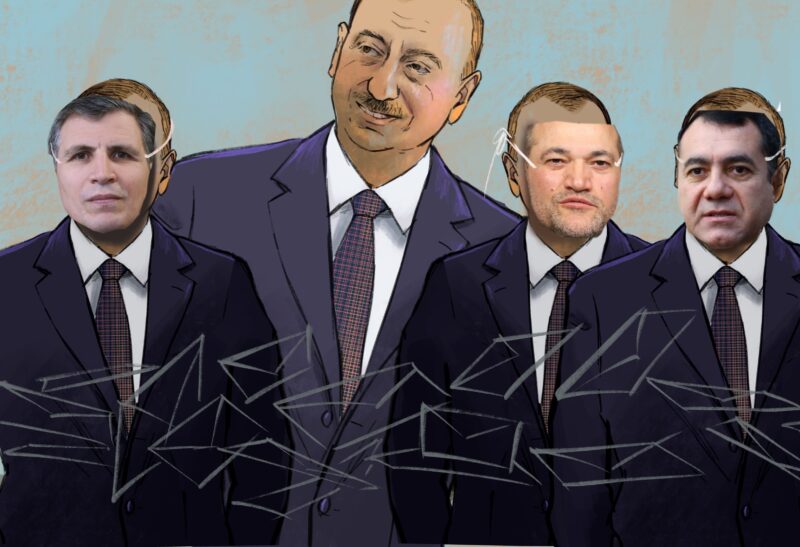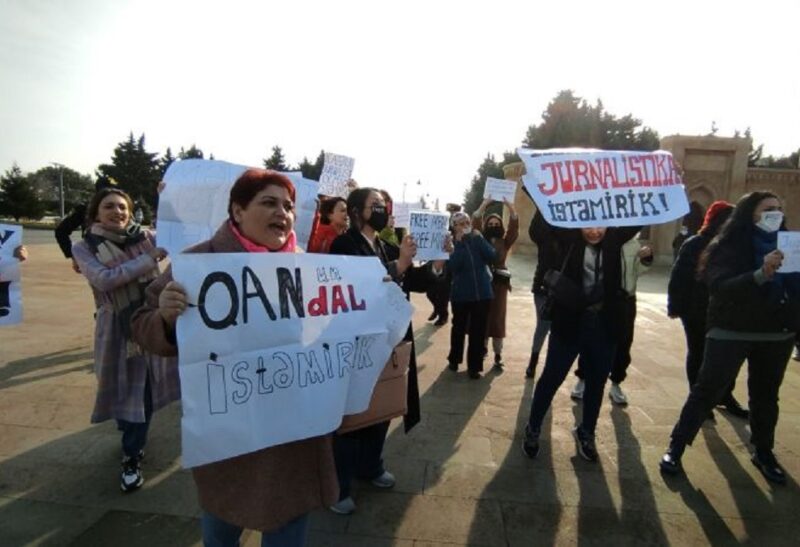Sara lost her two-year-long battle against cancer. Just a few days ago. Azerbaijani doctors put Sara and her family through enormous pain, enough pain for a lifetime in just two years. Yes, people die. We all know this simple truth. However, worthy of scrutiny is not that people die, but rather
how
they died. The
how
of death is an indicator of the level of cultural development of a society.
In his novel
The Plaque
, Camus says: “If you want to get to know a city, look at how people are dying out there.” That is why I have spent so much time with people who were terminally ill. I wonder how our people redefine their lives and relationships at their deathbed. In other words, how do they die?
When I heard about Sara’s condition, I visited her family. I had known her family for many years, so it was little inconvenience for me to come and go anytime I wanted and spend quality time with them. While at first Sara was reluctant to talk about her condition, she later told me the details about her pain and worries.
At first, fearing to trouble her with my presence, I hesitated to take photos of Sara. However, as time passed, she grew more comfortable in front of the camera. There was a symbolic meaning of the presence of a camera. She knew I was a journalist, and that the images would be shown or published somewhere. Therefore, every time I reached for the camera, she would take a moment to doll up a little bit. This was the case at the very beginning and early stages of her illness. The timeframe when her disease hadn’t progressed much and her body hadn’t lost its shape.
She felt the pain for the first time when she had to cut her hair. Every time she showered, she lost more and more hair and her body would gradually lose its shape. In order to avoid the pain of gradually losing her hair, she decided to cut it. Her younger brother Tural cut her hair after putting the children to sleep one evening. With every lock of her hair cut, Tural would simply take his eyes away from Sara and look into a far corner of the room or at his mother. Sara would hold her hands tight together and try hard not to cry as she watched her beautiful long blond hair fall on the floor. After Tural cut all of her hair, he hugged her tightly and kissed her affectionately.
After her hair was cut off, Sara began to wear a headscarf. She neither took her scarf off nor talked about her hair in front of me. This was at the early stage of her illness. Over time her condition began to deteriorate. She could no longer move easily and spent most of her time lying down in the bed or on the sofa. She would only leave the house for doctor appointments or chemotherapy. Despite all of her mother and brother’s pleas to go out, she would prefer to stay in the house.
Sara spent most of her time in bed. When relatives came to visit, they would gather around her bed and talk. In their own ways they tried to lift her spirits up. On those occasions, I would simply retire into the living room and try not to bother anyone. At first, I was worried and wondered a lot as to why people spoke so loud and with no pauses. Then I realized that they were troubled with the deafening silence of death that hovers in a patient’s room.
There was sometimes a brief silence. On those occasions, someone would intervene and break the silence immediately. As Sara’s condition worsened, she listened more than she spoke, waiting impatiently for the guests to leave. When all the guests left, Sara and her mother would be left alone to deal with the pain.
Each chemotherapy treatment would further aggravate Sara’s condition. She wasn’t able to sleep for days after the therapy. As each therapy came to a close, the Central Clinic doctors would rush to tell Tamara about the upcoming sessions without much conversing.
It was either the seventh or eighth therapy. Sara caught a cold while sitting in the bathroom waiting for her session to be over. As cancer patients receiving chemotherapy treatment usually need to use the bathroom frequently, the staff would simply have her stay in the restroom during the treatment. Can you image what this might mean?! As a result, her health deteriorated even further. At the beginning, the cost of each chemo session was 500-600 AZN ($475-570). Later as the treatment became more comprehensive, the price rose to 900 AZN ($860).
Tamara applied to Social Services for financial aid hoping to ease the financial burden. Social Services only gave 100 AZN ($95) monthly for an unemployed elderly woman whose daughter is a cancer patient. This amount was not enough to cover the treatment. Additional money for chemotherapy started coming in thanks to help from some of Tamara and Sara’s acquaintances in response to an announcement placed on the internet.
After all these hardships, sacrifices, and hard work, Tamara expected a little more humane medical care to be provided to her daughter. To no avail. The only ones to benefit from Sara’s illness were the doctors and the clinic. This was not the first cruelty practiced by the healthcare system. At the beginning of Sara’s illness, the National Oncology Center told Tamara: “You should take your daughter to Iranian specialists and not bring her over here.”
This only showed the reality of Azerbaijani healthcare. It seemed as if the Azerbaijani healthcare system fought to kill Sara and at the end succeeded with destroying her whole family.
Sara could not accept what was happening to her, and rebelled a lot. What she failed to comprehend was not just the healthcare system, but her whole 33 years of life. How could so much happen to one person?! She tried to seek refuge in God, blaming her misfortunes on fate, but she was not satisfied with the answers. The man she married repeatedly abused her physically. Sara’s children and her mother suffered a lot under his tyranny. According to the doctors, his severe physical violence may have caused the cancer in the first place.
If we always try to justify what happens to us by misfortunes of fate, people will be exempt from liabilities or consequences of their actions. The fundamental quality of an individual’s behavior is measured by his acceptance of responsibility. We as a society, as individuals, distance ourselves from the misfortunes happening as a result of our choices, and blame it on fate. We even include those who suffer from healthcare and legal mishaps in that mess.
Before Sara died, her mother Tamara admitted she did not even know the exact diagnosis of her illness. She was previously diagnosed with a different disease in a private clinic. Later, the Oncology Center told Tamara her daughter had cancer. Only after that diagnosis, did the fight with cancer begin. Instead of curing, the treatment Sara received from the healthcare system killed her before the cancer did.
This treatment did not just kill her physically, but took away her womanhood and her looks. She first died as a woman, and this death was the most painful to bear. Later on, Sara stopped covering her head or making the bed in front of the camera. She was exhausted. She surrendered to the camera she previously was so shy of.
From that day on, I no longer took the camera with me as I visited her…
The views expressed in this article are the author’s own and do not necessarily reflect Meydan TV’s editorial policy.



